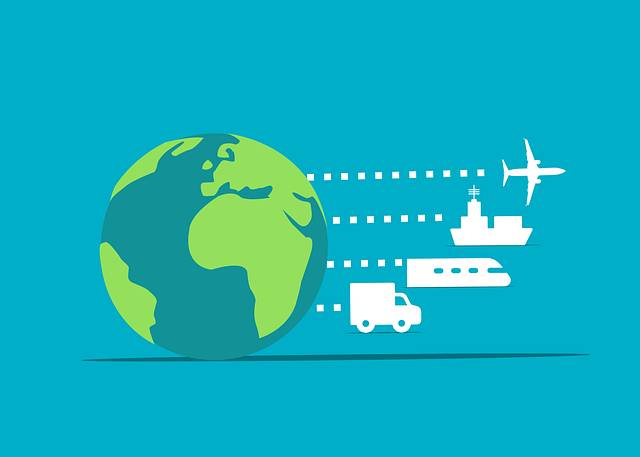What is the Cost of Goods Sold?
The cost of goods sold is an inventory valuation method to determine the exact inventory costs of the products you sell during a specific period. The cost of goods sold is sometimes referred to as the “cost of sales” or abbreviated by its acronym, COGS.
Any business selling physical inventory needs to determine COGS, but it primarily impacts retail and manufacturing companies. For retail and most businesses, COGS is related to purchased inventory.
For manufacturing businesses, additional factors such as raw materials, factory overhead, and other costs go into manufacturing the goods the factory sells. COGS calculation often includes variable costs, as the prices tend to fluctuate.
The cost of goods sold formula is as follows:
COGS = Beginning inventory + new inventory – ending inventory
Accounting Methods
There are four inventory valuation methods to determine COGS:
- First in, first out (FIFO): The first items in inventory are sold first.
- Last In, First Out (LIFO): The latest items added to inventory are the first items sold.
- Average Cost Method: The average price of all goods is used to value the goods sold.
- Special Identification Method: Used for large-ticket or unique items, such as rare jewels.
The inventory cost method you use depends on your industry and sales structure. In accrual accounting, you include COGS in the same accounting term as the revenue from the goods sold.
What’s included in the Cost of Goods Sold?
Here’s what to include when finding your COGS.
Beginning Inventory
Beginning Inventory refers to the number of goods you have in stock at the beginning of the accounting term. If you’re doing a quarterly report, it’s your business’s inventory at the start of the quarter. For annual reports, it’s the inventory in stock at the beginning of the year.
Direct Costs Incurred
Include any direct cost associated with acquiring the inventory sold during the period. Examples include the wholesale price of the goods.
Ending Inventory Balance
Ending inventory is the amount of inventory remaining at the end of the accounting term. After adding your direct costs for new goods to the existing inventory, you subtract the ending inventory amount.
Accrued costs include:
- Cost of items purchased for resale.
- Raw materials cost.
- The cost of parts used to make goods.
- Production costs.
- Direct labor costs associated with making products.
- Supplies used to make or sell items.
- Shipping or freight costs.
What’s excluded from Cost of Goods Sold?
The purpose of a company’s COGS is the find the amount you’re spending to acquire goods and exclude other expenses. A good line to remember is, “if there were no goods sold, would this be an expense?”
Here are a few items to exclude from COGS.
Indirect Costs
COGS only include production costs. Do not include indirect costs such as marketing, expenses, or shipping fees.
Operating Expenses
Operating expenses refer to the costs of running your business. It includes fixed costs like utilities, rent, and salaries. These expenses do not factor into COGS.
Specific expenses included from COGS include:
- Overhead costs.
- Rent.
- Equipment.
- Administrative expenses.
- Distribution costs.
- Marketing.
- Salaries and wages minus direct labor costs.
- Insurance and other liability protections.
- Office supplies.
How do you calculate Cost of Goods Sold?
The most straightforward formula for calculating the cost of goods sold is:
Beginning Inventory + New Inventory – Ending Inventory = COGS
New inventory, in this instance, represents the total direct costs of adding that new inventory. Let’s look at an example of calculating COGS.
Example of Cost of Goods Sold
We’ll use the fictional company Greg’s General Store for this example. Greg’s accountant is making a quarterly Income Statement, also known as a Profit/Loss Statement.
COGS is usually one of the income statement’s first line items after revenue. The previous quarter ended with $8,314 in remaining inventory, which became the beginning inventory for the new accounting term.
Beginning Inventory = $8,314.
During the quarter, the company purchased an additional $35,000 in inventory.
New Inventory = $35,000.
At the end of the quarter, the company sold $37,650 worth of its current inventory, resulting in $5,664 in ending inventory.
Ending Inventory = $5,664
Now we’re ready to put it all together for the total COGS for the quarter.
$8,314 + $35,000 – $5,664 = $37,650.
Greg’s General Store’s total Cost of Goods Sold for the quarter = $37,650.
How does Cost of Goods Sold impact gross profit?
Revenue is your top line item, representing the total money coming into the business. Gross profit refers to the amount left over after subtracting COGS from revenue.
Knowing your gross profit lets you know how efficiently your company turns goods into profit. It also provides insight into where your business can improve. For example, low profit indicates you are either paying too much for goods or need to raise your selling prices.
Find Gross Profit from COGS
Let’s continue with the Greg’s General Store example from above. We know the COGS for the accounting period is $37,650.
Let’s say the company drove $76,745 in revenue during that quarter. We have to subtract COGS to get the business’s gross profit.
$76,745 – $37,650 = $39,095
Gross Margin
Once you know your profit, you can find the gross margin. Gross margin is the percentage of revenue you successfully converted into profit, which is a valuable indicator of your profitability.
In this case, we divide the gross profit by the total revenue:
Gross margin =
$39,095/$76,745 = 0.509, which becomes 51%. A gross margin of 50% or better is considered good.
Frequently Asked Questions
Here are some common questions about COGS.
Why is the Cost of Goods Sold important?
COGS provides you with a lot of valuable information about your business and profitability. Let’s look at some cases where you can use COGS to improve your business strategically.
Pricing Your Goods
High COGS and a low gross profit margin might indicate you’re not charging enough for the products you sell. When doing your analysis, determine if you can increase the amount you’re charging.
In some instances, raising prices isn’t feasible. If that’s the case, you need to consider lowering your COGS. It would be best to find the right price balance where your customers are willing to pay, and it’s enough for you to profit.
Comparing Gross Profit & Net Profit
Net profit is the amount of money your company makes after subtracting all direct expenses, and it’s the bottom line of your income statement. Your net profit margin is the percentage of revenue converted to net profit.
You’re spending too much on operating expenses if you have a high gross profit margin but a low net profit margin.
For example, in Greg’s General Store example, we found the company’s gross profit margin was 51%. Now, let’s say that operating expenses, taxes, and other expenses for the accounting period totaled $32,750.
Using the revenue of $76,745 would see that:
Sales revenue: $76,745
Cost of Goods Sold: $37,650
Gross profit: $39,095
Operating Expenses: $32,750
Net profit: $6,345.
Now divide the net profit by gross revenue:
$6,345/$76,745 = 0.082, which you round to a net profit margin of 8%.
A net profit margin of 8% from a gross profit margin of 51% indicates the company is spending too much at the operating level. You would know you need to improve your operating efficiency in this situation.
Lowering Cost of Goods Sold
On the other hand, if your net profit margin is good (10% or better) but your gross profit margin is low (50% or lower), then you know you’re spending too much on inventory. In this case scenario, aim to lower the costs of goods sold.
Lowering COGS includes improving manufacturing efficiency or reducing the cost of raw materials. Or, if you’re a retailer, shop for a different supplier or vendor to get similar products at a lower price.
Am I required to report the Cost of Goods Sold?
COGS helps you determine valuable information about your company. It also is required reporting in some instances.
GAAP
Cost of Goods Sold is an item in the generally accepted accounting principles (GAAP). While it doesn’t go into any detail, it is included in GAAP, usually defined as the cost of inventory items sold during an accounting period.
Income Statement
The cost of goods sold is an essential item on your income statement. Understanding the relationship between your COGS and revenue helps you identify areas where you can improve your profit margins.
Tax Purposes
COGS is a tax reporting requirement. The IRS requires companies that make and sell products or buy and resell goods to calculate COGS to write off the expense. Writing off COGS decreases the taxes you need to pay on revenue.
When don’t you use Cost of Goods Sold?
The cost of goods sold only factors in companies that make or sell physical goods. Companies or businesses that provide services don’t include COGS. Instead, the costs used to generate service revenue are called “cost of revenue.”
Service companies that don’t use COGS include:
- Doctors and medical practices.
- Transportation services.
- Customer support and service.
Hybrid Business
Many service companies might also include physical merchandise sales. For example, a full-service car wash company might also sell air fresheners, windshield wipers, car glass cleaners, etc.
In those cases, the business still includes the Cost of Goods Sold along with the cost of revenue.
Cost of Goods Sold – Final Thoughts
As a small business owner, you want the tools and knowledge necessary to improve your business. The cost of goods sold is a critical metric to help you with that goal.
COGS helps you determine gross profit, enabling you to understand your net profit. Looking at the expenses at each level of the business identifies where you need to improve the most.

















